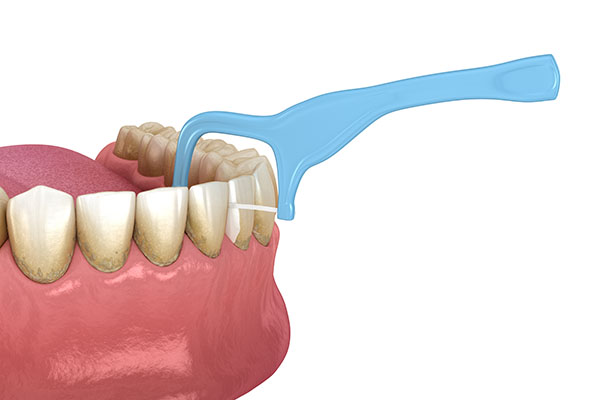Bloody Gums Flossing

Flossing is a crucial aspect of oral hygiene, and neglecting this practice can lead to a range of issues, including bloody gums. When gums bleed, it’s often a sign of inflammation, which can be caused by the accumulation of plaque and bacteria along the gumline. This inflammation, known as gingivitis, is the initial stage of gum disease and can be easily treated with proper oral care and professional dental cleaning. However, if left unaddressed, gingivitis can progress to periodontitis, a more severe form of gum disease that can lead to the loss of teeth and other complications.
Understanding Gingivitis
Gingivitis is characterized by red, swollen gums that may bleed when brushing or flossing. It’s primarily caused by poor oral hygiene, allowing plaque—a sticky film of bacteria—to build up on teeth. If plaque is not removed, it can cause inflammation of the gums. This condition is reversible with good oral hygiene practices, including brushing at least twice a day and flossing once a day to remove plaque from between the teeth and under the gumline.
The Role of Flossing
Flossing plays a critical role in preventing gingivitis and maintaining healthy gums. It allows for the removal of food particles and plaque from areas that a toothbrush cannot reach. When performed correctly, flossing helps to prevent the buildup of plaque and reduces the risk of gum inflammation. It’s essential to floss gently to avoid damaging the gums. The correct technique involves curving the floss around the base of each tooth in a “C” shape, ensuring that the floss goes beneath the gumline to remove any trapped particles.
Addressing Bloody Gums
If you notice that your gums are bleeding, it’s a clear indication that you need to adjust your oral care routine. Here are some steps you can take:
- Enhance Your Flossing Technique: Make sure you’re flossing correctly and that you’re covering all areas of your mouth.
- Increase Flossing Frequency: If you’re only flossing once a day, consider increasing the frequency, especially after meals.
- Use an Antiplaque Mouthwash: Mouthwashes that carry the American Dental Association (ADA) Seal of Acceptance have been shown to be effective in reducing plaque and gingivitis.
- Brush Correctly: Ensure you’re brushing your teeth at least twice a day with a fluoride toothpaste and that you’re covering all surfaces of your teeth.
- Visit Your Dentist: Regular dental check-ups are crucial for the early detection and treatment of gum disease. Your dentist can provide professional cleaning and offer personalized advice based on the condition of your teeth and gums.
Advanced Oral Care Tools
For some individuals, traditional flossing may not be the most effective or comfortable method, especially for those with tightly spaced teeth or dental work such as bridges. In these cases, alternative tools like interdental brushes or a water flosser can be more effective. Interdental brushes are designed to clean between teeth and come in various sizes to fit different spaces. Water flossers use a stream of water to remove plaque and debris, which can be particularly helpful for people with orthodontic appliances or dental implants.
Preventing Gingivitis and Promoting Gum Health
Prevention is key when it comes to maintaining healthy gums and preventing conditions like gingivitis. A comprehensive oral care routine that includes daily flossing, brushing, and regular dental visits can significantly reduce the risk of gum disease. Additionally, avoiding tobacco products, which are known to contribute to gum disease, and limiting sugary and acidic foods and drinks, which can contribute to tooth decay and further gum issues, are also crucial.
Conclusion
Maintaining good gum health through regular flossing and a comprehensive oral care routine is essential for preventing conditions like gingivitis and more severe forms of gum disease. By understanding the causes of bloody gums and taking proactive steps to improve oral hygiene practices, individuals can reduce their risk of gum disease and contribute to overall health and well-being.
What is the main cause of bloody gums during flossing?
+The main cause of bloody gums during flossing is the inflammation of the gums, known as gingivitis, which is often a result of poor oral hygiene and the accumulation of plaque and bacteria along the gumline.
How can I prevent my gums from bleeding while flossing?
+To prevent gums from bleeding, ensure you’re flossing gently and correctly, and consider increasing the frequency of flossing. Additionally, maintaining a good oral care routine that includes regular brushing and dental visits can help prevent gum disease.
What are the best tools for flossing, especially for those with tightly spaced teeth or dental work?
+For individuals with tightly spaced teeth or dental work, interdental brushes or a water flosser can be more effective than traditional floss. These tools are designed to navigate tight spaces and clean around dental work efficiently.
How often should I visit my dentist to ensure good gum health?
+Regular dental check-ups are crucial for maintaining good gum health. It’s recommended to visit your dentist at least twice a year for routine cleaning and check-ups. However, the frequency may vary based on your oral health status and your dentist’s recommendations.
Can gum disease be reversed with proper care?
+Gingivitis, the initial stage of gum disease, can be reversed with proper oral care and professional dental cleaning. However, if gum disease progresses to periodontitis, while it can be managed, some damage may be irreversible.
